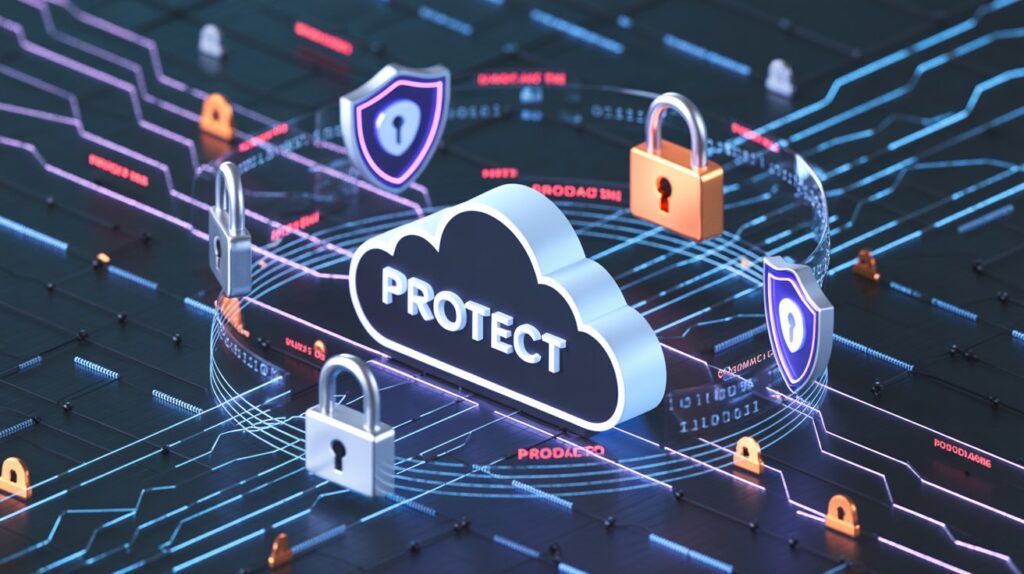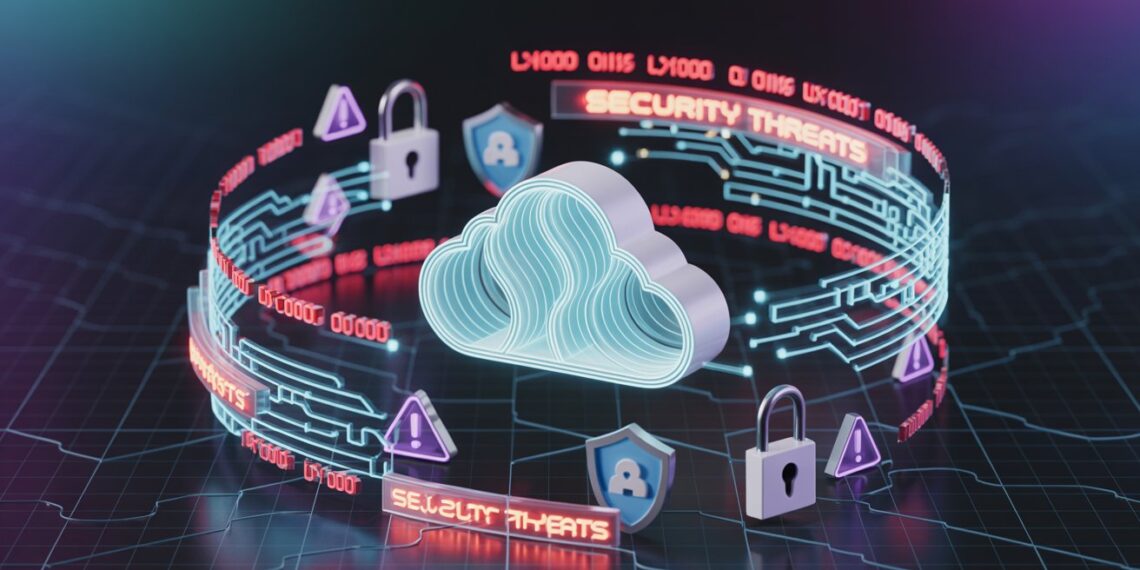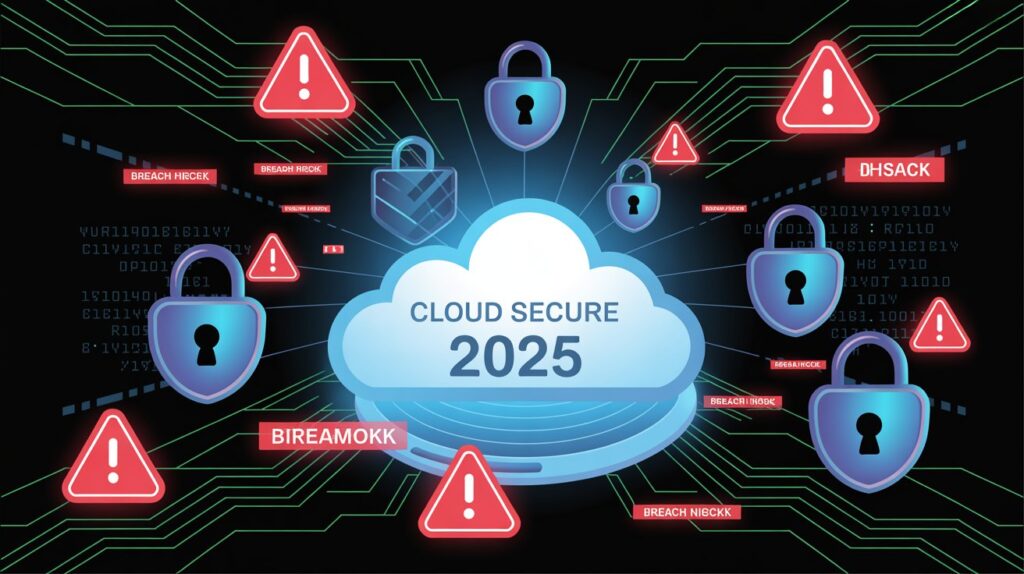Cloud computing has transformed the way organizations operate, enabling flexibility, scalability, and innovation at unprecedented levels. Yet, with rapid adoption comes increased exposure to evolving cyber risks. By 2025, the cloud has become the backbone of digital transformation across industries—but it is also a prime target for sophisticated cybercriminals.
According to industry reports, more than 65% of businesses experienced a cloud-related security incident in the past year, with misconfigurations, insecure APIs, and identity mismanagement ranking among the top causes. Human error alone accounts for more than 80% of cloud security breaches. This trend reveals a sobering reality: many of today’s cloud risks are preventable, yet they remain persistent.
In this article, we will explore the most pressing Cloud Security Threats in 2025 – What to Watch Out For, drawing from real-world case studies, expert insights, and statistical research. We will also highlight best practices for mitigating these risks and preparing your organization for an increasingly complex threat landscape.
Why Cloud Security Threats Are Growing in 2025

Some of the major factors contributing to rising threats include:
-
Multi-cloud complexity: Managing workloads across AWS, Azure, and Google Cloud introduces configuration and monitoring challenges.
-
Rapid adoption of AI and APIs: New services often lack sufficient security controls during rollout.
-
Identity sprawl: Both human and machine accounts (service accounts, bots, AI agents) are proliferating, creating weak points.
-
Supply chain dependencies: A breach at a cloud service provider (CSP) or SaaS vendor can cascade to thousands of organizations.
-
Increased attacker sophistication: Threat actors now use AI-driven tools to exploit vulnerabilities faster than ever before.
With these drivers in mind, let’s break down the specific threats you need to be prepared for in 2025.
Misconfiguration and Change Management Failures
The Persistent Top Risk
Misconfigurations remain the single largest cause of cloud breaches. Studies show that 99% of preventable cloud incidents stem from incorrect configurations of storage, IAM policies, or network settings.
Even in 2025, many organizations lack robust change management procedures. For example:
-
Cloud storage left publicly accessible.
-
Excessive permissions granted during project rollouts.
-
Failure to revoke access for former employees or expired applications.
Real-World Example
A global retailer suffered a data leak after a misconfigured Amazon S3 bucket exposed millions of customer records. The error remained undetected for weeks because the company lacked automated monitoring tools.
Mitigation
-
Implement continuous compliance monitoring tools.
-
Adopt a “least privilege” model.
-
Automate configuration audits to detect and remediate risky settings in real-time.
Identity and Access Management (IAM) Weaknesses
Human vs. Non-Human Identities
Identity-based attacks are surging, and they represent one of the most critical Cloud Security Threats in 2025. In today’s cloud ecosystems, non-human identities (NHIs)—such as service accounts, scripts, and API keys—now outnumber human users by an astonishing 82 to 1. These machine identities are often overlooked during security audits, frequently over-privileged, and rarely monitored, making them a prime target for attackers seeking to exploit weak points in identity and access management.
Common IAM Threats
-
Weak or absent multi-factor authentication (MFA).
-
Overprivileged accounts (administrators granted unnecessary permissions).
-
Shadow IT applications using unauthorized accounts.
-
Dormant identities that remain active for months or years.
Mitigation
-
Enforce strong MFA across all accounts.
-
Regularly audit and revoke unused identities.
-
Employ just-in-time access provisioning.
-
Extend identity governance policies to machine and AI accounts.
Insecure APIs and the Expanding GenAI Attack Surface
Why APIs Are Risk Magnets
APIs are the glue of cloud services, enabling integrations and data sharing across platforms. Unfortunately, they have also become one of the significant Cloud Security Threats in 2025, as attackers exploit poor authentication, inadequate monitoring, and excessive data exposure. Without proper safeguards, insecure APIs can open the door to large-scale breaches and unauthorized access to sensitive information.
GenAI Complications
The explosion of generative AI services integrated into cloud applications has opened new attack surfaces:
-
Malicious prompts injected into APIs.
-
Model inversion and poisoning attacks.
-
Lack of governance over AI agents communicating through APIs.
Mitigation
-
Secure APIs with strong authentication and rate limiting.
-
Use API gateways with anomaly detection.
-
Apply continuous monitoring to detect suspicious traffic patterns.
-
Establish governance policies for AI-enabled services.
Supply Chain and Third-Party Vulnerabilities
The Cascading Risk of Dependence
Organizations increasingly rely on third-party SaaS vendors, open-source libraries, and CSP-managed services. This introduces a domino effect: if a vendor is compromised, all customers are at risk.
Notable Threats
-
SaaS zero-day exploits: Attackers exploit vulnerabilities in popular SaaS tools to gain mass access.
-
CSP-level breaches: A single misstep at a major provider can impact thousands of tenants.
-
Weak vendor security practices: Smaller SaaS startups often lack robust controls.
Mitigation
-
Vet vendors with thorough security assessments.
-
Demand transparency on incident response policies.
-
Implement vendor risk management frameworks.
-
Diversify SaaS dependencies where feasible.
5. Ransomware in the Cloud
Ransomware has evolved from targeting endpoints to infiltrating cloud environments. Attackers now encrypt cloud-hosted data, demand ransom for decryption keys, or threaten public leaks.
2025 Trends
-
Exploiting cloud backup misconfigurations.
-
Leveraging stolen cloud credentials for persistence.
-
Cross-cloud ransomware attacks spanning multiple providers.
Mitigation
-
Encrypt data at rest and in transit.
-
Ensure immutable, offsite backups.
-
Conduct regular disaster recovery drills.
-
Implement anomaly detection to spot encryption activity.
6. AI-Driven Threats
Artificial intelligence is a double-edged sword. While organizations use AI for security monitoring, attackers are using it to launch faster and more sophisticated campaigns.
Examples of AI-Powered Threats
-
Automated scanning for misconfigured assets.
-
Deepfake phishing attacks targeting executives.
-
Model manipulation (data poisoning, adversarial inputs).
Mitigation
-
Employ AI-driven defense tools—but configure them carefully to avoid alert fatigue.
-
Validate data integrity in AI training sets.
-
Combine AI analytics with human oversight to prevent blind spots.
Detection Gaps and Alert Fatigue
The Problem
Studies show that only 35% of cloud threats are detected by existing security tools, leaving organizations dangerously exposed. As one of the pressing Cloud Security Threats in 2025, this detection gap highlights how unprepared many companies still are. Security teams remain overwhelmed by thousands of daily alerts, the majority of which are false positives, making it harder to identify genuine attacks before damage occurs.
Why It Matters
Undetected breaches can persist for weeks or months, allowing attackers to exfiltrate sensitive data undisturbed.
Mitigation
-
Consolidate tools to reduce complexity.
-
Use AI-driven prioritization to highlight critical alerts.
-
Implement a security operations center (SOC) with cloud-specific expertise.
8. Emerging Risks: Quantum and Beyond
Quantum Threats
Though still in early stages, quantum computing raises concerns about cryptographic vulnerabilities in cloud systems. Future-proofing encryption will become essential.
AI Agents and Autonomous Code Execution
As organizations experiment with autonomous AI agents in the cloud, risks arise from:
-
Agents executing unauthorized code.
-
AI-driven privilege escalation.
-
Lack of accountability for machine-driven decisions.
Mitigation
-
Monitor developments in post-quantum cryptography.
-
Apply strict governance to AI agents.
-
Use sandboxed environments for experimental AI deployments.
Best Practices for Cloud Security in 2025
-
Adopt Zero Trust: Continuously verify identities and enforce least privilege.
-
Automate Everything: Configuration management, compliance checks, and patching should be automated.
-
Prioritize API Security: APIs are no longer secondary—they are core attack vectors.
-
Secure the Supply Chain: Conduct due diligence on every third-party service.
-
Train Your Workforce: Human error remains a leading cause of breaches; awareness training is essential.
-
Invest in Unified Platforms: Reduce tool sprawl to improve visibility and response times.
-
Plan for Ransomware: Assume it will happen; have backups and recovery processes ready.
-
Stay Ahead of AI Risks: Monitor adversarial AI developments and adapt your defenses accordingly.
FAQs
1. What is the biggest cloud security threat in 2025?
Misconfiguration remains the number one cloud security threat, responsible for the majority of preventable breaches.
2. Why are APIs considered high risk in cloud environments?
APIs often lack proper authentication and monitoring, making them easy targets for attackers seeking unauthorized access or data leakage.
3. How does AI affect cloud security?
AI benefits defenders by enabling faster anomaly detection but also empowers attackers to automate scanning, phishing, and data manipulation.
4. What is Zero Trust in cloud security?
Zero Trust is a model that assumes no user or system is trusted by default. Access is granted only after continuous verification.
5. How can organizations prepare for ransomware in the cloud?
Implement immutable backups, encrypt all sensitive data, and regularly test disaster recovery plans.
Conclusion
The cloud is no longer a peripheral technology—it is the core infrastructure powering business in 2025. This makes cloud security a critical priority. Organizations must address persistent threats like misconfiguration and IAM weaknesses while preparing for newer challenges posed by APIs, AI, and supply chain vulnerabilities.
The most successful security strategies in 2025 will be those that combine automation, Zero Trust principles, and proactive risk management with a culture of security awareness.
By understanding the Cloud Security Threats in 2025 – What to Watch Out For, and implementing robust mitigation measures, businesses can protect their data, maintain compliance, and build resilience in an increasingly complex digital landscape.











